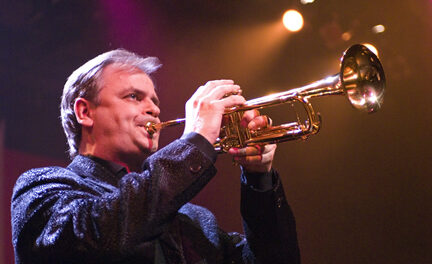In brief comments from the stage of Whitley Auditorium, pianist Ann Schein said her special feeling for Elon University dated to her daughter’s matriculation and has grown with her participation in the Adams Foundation’s piano recital series. Currently taking place in 35 venues nationwide, the goal of the series, she said, is to bring solo piano recitals to 50 smaller communities. Schein also spoke about the selections and how some related to her career. Her most significant teachers were Mieczyslaw Munz, Arthur Rubinstein, and Dame Myra Hess.
The Piano Sonata No. 25 in E-flat, Op. 81a (“Les Adieux”), by Ludwig van Beethoven (1770-1827) has more direct autobiographical associations than most. The nickname refers to the flight of the composer’s patron, Archduke Rudolf, from Vienna before its attack by Napoleon’s army. A short, hesitant adagio leads directly into an allegro of kaleidoscopic shifting and twisting textures. The slow middle movement portrays heartfelt sadness. The wild finale is marked “Vivacissimamente,” a designation unique in Beethoven’s scores. This singular use of the superlative form stands in marked contrast to the composer’s more measured use of “allegro,” “allegro vivace,” or “allegro molto vivace.” Schein projected a wide dynamic range and phrased superbly, perfectly balancing classical style with more Romantic emotion. She wove the melodic line in the slow movement seamlessly. The clarity of her articulation, while following Beethoven’s direction “as fast as possible,” was breathtaking. Schein said this sonata has always been special to her. She heard Hess play it often, and Schein chose it to open her debut program in Carnegie Hall in 1962.
The “Wanderer” Fantasie in C, Op. 15, by Franz Schubert (1797-1828), consists of four continuous movements unified by their musical relationship to the slow second movement and containing variations on a theme taken from one of the composer’s most famous songs, “Der Wanderer.” The rhythmic components of the other three movements are determined by the rhythmic patterns of the slow movement. Relentless drive dominates the first movement. Thematic material from the first ties it to the third movement, a scherzo. Similar themes are treated fugally in the finale. Schein’s ability to refine the work’s forward momentum within the overall structure was astonishing. She used a wide range of tone coupled with an electrifying compass from hushed notes to fortes that grabbed the listener.
Schein is highly regarded for her interpretations of the Romantic repertoire such as Chopin, Schumann, and Schubert. It was a rare treat to hear her take on the Impressionist repertoire. Claude Debussy (1862-1918) and Maurice Ravel (1875-1937) are too often lumped together under the rubric.. While they were contemporaries who admired each other’s works, they approached musical composition with substantially different ideas. They did incorporate each other’s unorthodox harmonic techniques. Ravel emphasized craftsmanship in his compositions while Debussy stressed freedom of form. Schein’s choices juxtaposed this perfectly. Ravel’s Sonatine, in three movements, displays the composer’s classical streak. Debussy’s exquisite “L’Isle joyeuse” uses the Lydian mode to mediate materials in the whole-tone scale and the diatonic scale. Schein’s playing of the Ravel was elegant and refined. She brought a broad palette of color and verve to the Debussy.
In the Tarantella from “Venezia e Napoli,” from Années de Pèlerinage (“Year I, Italy”), Schein pulled out all the stops and burned up the keyboard. Her loudest forte thundered and shook the hall. Such power made the fact that she has played Rachmaninov’s Third Piano Concerto more than 100 times particularly believable. Prolonged and hearty applause was rewarded with two Chopin works as encores, one of the Trois nouvelles Études and another from an earlier set.
Schein’s impeccable technique made the most of the rich sound resources of a 1923D Steinway marvelously restored by John Foy of Foy Piano Restorations.












